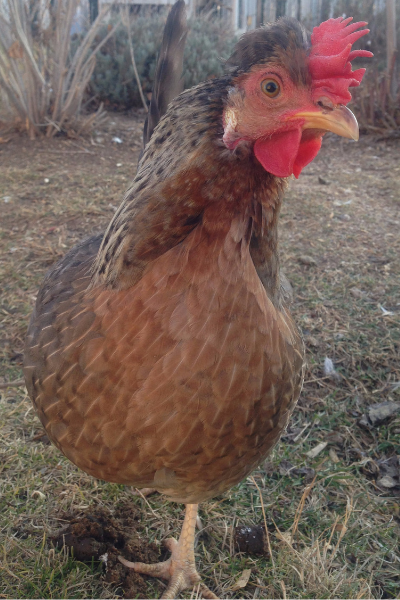The Cream Legbar chicken has quickly gained popularity with chicken keepers all over the U.S. since it was introduced about a decade ago. And it’s easy to see why with their beautiful blue eggs, exotic appearances and spunky, free-ranging personalities! Get to know the breed better and see if it’s a good fit for your flock!
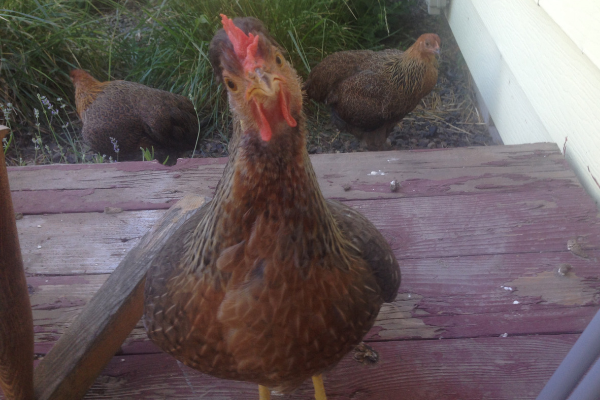
History of the breed:
You probably know Professor Punnett, the famed British geneticist, for his work developing the Punnett Square. But this Cambridge professor also made a significant contribution to the agriculture world by developing a breed of chicken that has auto-sexing characteristics. Today, we know this chicken breed as the Cream Legbar.
The professor began his work in the 1920’s by crossing and back-crossing chicken breeds such as South American Araucanas, Leghorns and Barred Rocks. In addition to possessing auto-sexing genetics, the South American Araucana genetics enabled the new breed to lay beautiful light blue eggs and have an exotic look!
The Cream Legbar was introduced as a new breed at a London livestock show in 1947. However, the breed almost went extinct in the 1970’s, because blue eggs were not desirable. Luckily, trends have changed over the past decades! This beautiful breed came back into the spotlight and was introduced to America in 2011.
Appearance:
Cream legbars are rather petite birds, with females weighing around 6 pounds and males weighing around 7 pounds on average. They have a bright red comb and a small but pronounced crest on their heads, which looks like a little mohawk! They are usually light greyish-brown to cream in color with salmon to reddish colored chests. Roosters and many females will exhibit barred coloring around the saddle. Their tails are held erect and are “fan-shaped”.
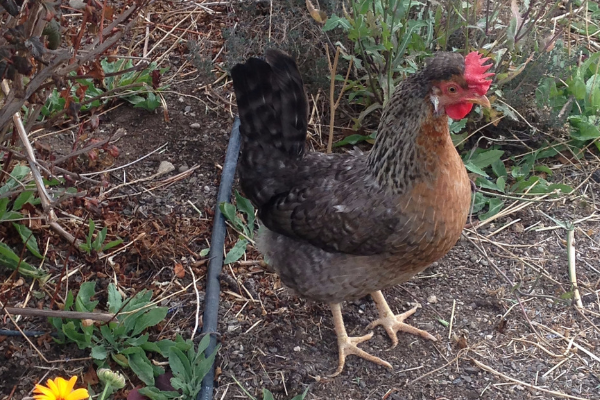
A hen, exhibiting a dark grey coloration with barred saddle and salmon-colored chest
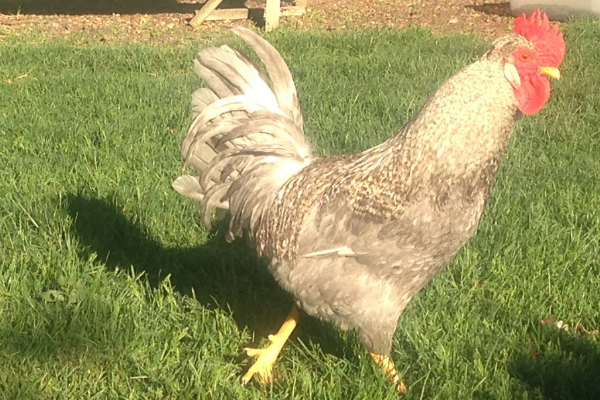
A legbar rooster, exhibiting light grey coloration with barred saddle area
Auto-Sexing Characteristics:
The legbar’s auto-sexing gene allows us to tell males from females immediately after they hatch. Females have a set of tell-tale dark stripes down their backs that look similar to chipmunk stripes. Males do not possess the dark colored stripes (although they may have a single light stripe) and also should exhibit a light-colored spot on the back of their heads.
The auto-sexing gene is passed from generation to generation. So, when legbars are bred together, they will continue producing the auto-sexing coloration in chicks. Sex-link chickens, on the other hand, are hybrids that loose their sexable characteristics after the first generation. The auto-sexing gene was truly revolutionary when it was developed and is a huge benefit to the chicken-keeping community!
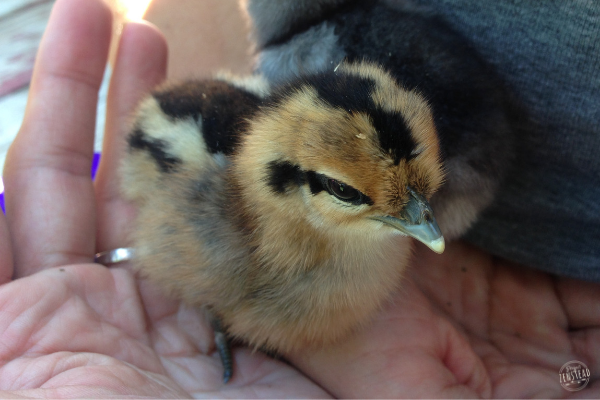
A day-old female legbar – notice the “chipmunk” stripes on her back
Egg Laying:
Not only are legbars a hardy and versatile chicken breed, they are also fantastic egg layers! They lay gorgeous sky blue eggs that are surprisingly large for the size of chicken that produces them. They are also very reliable layers! Many of our young legbars lay eggs all winter long, even when our other breeds take a seasonal break. They average around 230 eggs per year!
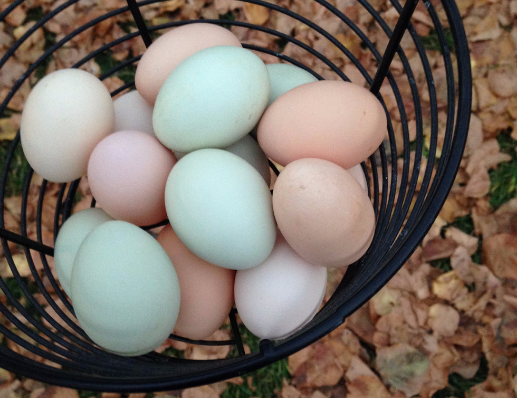
Personality:
Legbars are a great choice for chicken keepers who have a large chicken run or are able to allow their chickens to free-range. They are enthusiastic and curious birds that like to explore and forage. They are generally hardy birds who are athletic and predator-aware.
We have found that our legbars are always the first ones out of the coop in the morning, ready to explore! Since they have light bodies, they can become slightly flighted. We still end up chasing our legbars back from our neighbor’s yard sometimes, even though they have almost an acre to free-range on! But their hardiness, ability to free-range, and curious personalities make this breed one of our favorites to keep!
Our original cream legbar hen came in a surprise pack of hatching eggs from a local poultry breeder. We had no idea what breed the hen was when she hatched, but she quickly won us over with her spunky personality and unique appearance! This hardy breed with beautiful blue eggs is a perfect fit for our homestead!
Since then, we have added so many legbars to our flock that they now make up over half of the flock! We have found that they handle the cold and heat of our high desert climate well. While they are an independent breed, they can also be quite docile and easy to handle when worked with regularly.
If you are ready to add Cream Legbars to your flock, order chicks or hatching eggs from a high-quality poultry producer. This lively and beautiful breed is sure to be a great addition to your flock!
